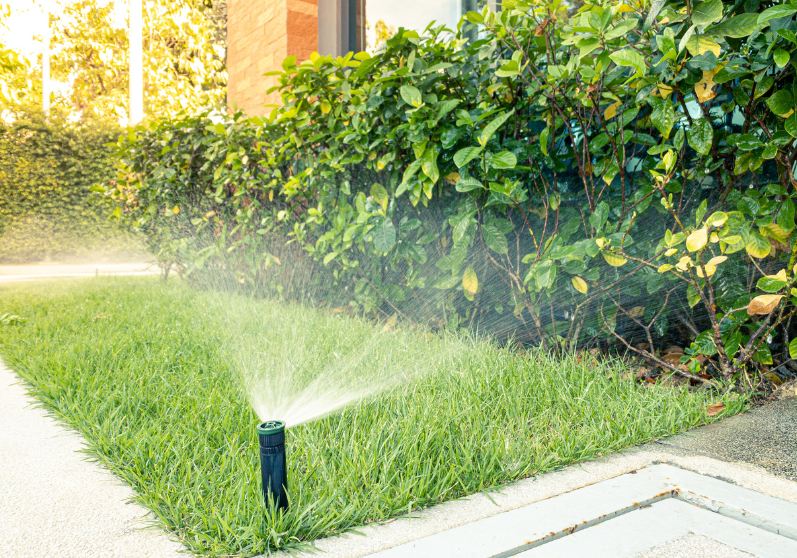Sprinkler systems are a convenient and efficient way to keep your lawn and garden hydrated. But if you’re new to owning a sprinkler system, it can be overwhelming to understand all of the different components and options available. In this blog post, we’ll go over the basics of how sprinkler systems work, the different types of systems available, and how to choose the right system for your property.
How Sprinkler Systems Work
Sprinkler systems are designed to automatically water your lawn and garden by using a network of pipes, valves, and sprinkler heads. The system connects to a water source. Such as a well or municipal water supply, and is controlled by a central control panel or timer.
When the system is activated, water is pumped through the pipes and out of the sprinkler heads, which are positioned around your property to provide even coverage. The sprinkler heads can be adjusted to rotate or spray in different patterns, depending on the type of system and the needs of your lawn and garden.
Types of Sprinkler Systems
- Rotary Sprinkler Systems
- Spray Sprinkler Systems
- Drip Irrigation Systems
- Smart Irrigation Systems
There are several different types of sprinkler systems to choose from, each with its own set of benefits and drawbacks. Here are some of the most common types:
Rotary Sprinkler Systems
Rotary sprinkler systems use long, narrow sprinkler heads that rotate to distribute water evenly over a large area. These systems are best for large lawns and open areas.
Spray Sprinkler Systems
Spray sprinkler systems use smaller, stationary sprinkler heads that spray water in a circular pattern. These systems are better for smaller lawns or gardens with more complex shapes.
Drip Irrigation Systems
Drip irrigation systems use a network of small tubes to slowly release water directly to the roots of plants. These systems are more water-efficient than traditional sprinkler systems and are ideal for watering gardens or flower beds.
Smart Irrigation Systems
Smart irrigation systems use advanced technology, such as sensors and weather forecasts, to optimize watering schedules and reduce water waste. These systems can be more expensive upfront, but they can save you money on water bills in the long run.
Choosing the Right System for Your Property
When it comes to choosing the right sprinkler system for your property, there are a few factors to consider:
Size and shape of your lawn or garden:
If you have a large, open lawn, a rotary system may be the best choice. If you have a smaller, more complex-shaped lawn or garden, a spray system may be more suitable.
Water availability and cost:
Drip irrigation systems are more water-efficient than traditional sprinkler systems, so they may be a good choice if you’re concerned about water conservation or if water is expensive in your area.
Budget:
Smart irrigation systems can be more expensive upfront, but they can save you money on water bills in the long run. If you’re on a tight budget, a more basic system may be a better choice.
Maintenance needs:
Some sprinkler systems require more maintenance than others. If you’re not comfortable with DIY repairs or don’t have the time to keep up with regular maintenance, you may want to choose a system with fewer components or a longer warranty.
If you’re considering installing a residential sprinkler system in your home, be sure to do your research and choose a reputable company to do the work. Ensure the contractor you choose is properly licensed and insured. Make sure any necessary permits have been obtained, and don’t forget to regularly test and maintain your system to ensure it is functioning properly.
If you have any further questions about residential sprinkler systems or would like more information, don’t hesitate to reach out to us. Sprinkler Repair of Texas is here to help you make the best decision for your home and family. So, take the first step towards protecting your home and loved ones by learning more about residential sprinkler systems today.
